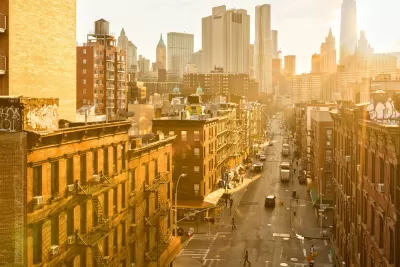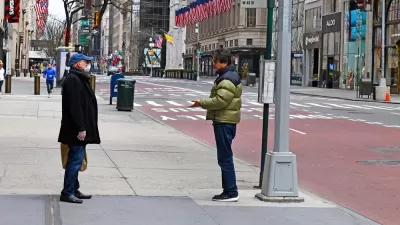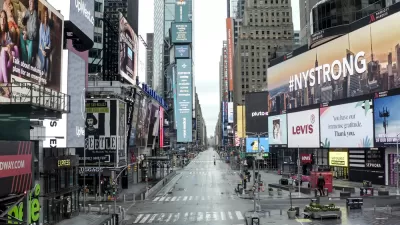Building more housing where people work is a simple way to come out of the pandemic with a stronger sense of community and shorter commutes, according to this article.

Pandemic lockdown has changed the way people relate to the cities in which they live, shop, and work. Increasingly, say Michael Hendrix and John Ketcham, the coronavirus pandemic has changed the way residents of the New York City region commute and shed light on the fact that under 'normal' circumstances, hordes of people commute into cities on a daily basis to get to work.
Hedrix and Ketcham opine that instead of allowing the commute to continue, planners and lawmakers should increase housing supply in commercial areas. Upzoning commercial areas, they say, will minimize commute times while improving neighborhood quality and individuals' quality of life.
The article urges for the transformation of New York City neighborhoods, its authors arguing that density controls and regulation opposing adaptive reuse are ultimately damaging to community vitality in the Big Apple. Not enough housing has been built in areas where jobs are growing. "An October 2019 report by the New York City Department of City Planning found that from 2009 to 2018, 700,000 new jobs were added in the city, compared with only 197,000 new housing units permitted," write Hedrix and Ketcham.
Given the decreasing demand for urban retail and office space, planners and politicians should begin to build housing in those areas where demand will ultimately crop up again. According to Hedrix and Ketcham. "With the right policies, this time of crisis can give way to more neighborhoods where we live, work, and play."
FULL STORY: More housing is the answer to less transit

Maui's Vacation Rental Debate Turns Ugly
Verbal attacks, misinformation campaigns and fistfights plague a high-stakes debate to convert thousands of vacation rentals into long-term housing.

Planetizen Federal Action Tracker
A weekly monitor of how Trump’s orders and actions are impacting planners and planning in America.

In Urban Planning, AI Prompting Could be the New Design Thinking
Creativity has long been key to great urban design. What if we see AI as our new creative partner?

King County Supportive Housing Program Offers Hope for Unhoused Residents
The county is taking a ‘Housing First’ approach that prioritizes getting people into housing, then offering wraparound supportive services.

Researchers Use AI to Get Clearer Picture of US Housing
Analysts are using artificial intelligence to supercharge their research by allowing them to comb through data faster. Though these AI tools can be error prone, they save time and housing researchers are optimistic about the future.

Making Shared Micromobility More Inclusive
Cities and shared mobility system operators can do more to include people with disabilities in planning and operations, per a new report.
Urban Design for Planners 1: Software Tools
This six-course series explores essential urban design concepts using open source software and equips planners with the tools they need to participate fully in the urban design process.
Planning for Universal Design
Learn the tools for implementing Universal Design in planning regulations.
planning NEXT
Appalachian Highlands Housing Partners
Mpact (founded as Rail~Volution)
City of Camden Redevelopment Agency
City of Astoria
City of Portland
City of Laramie





























